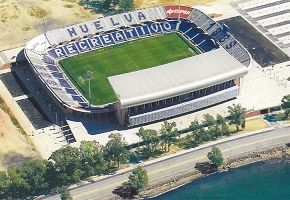William Alexander Mackay
Football came to Spain in the early 1880s and quietly to a town that was created in the mountains of Andalucia from nothing. It was and still is a mining town, Minas de Riotinto, that almost a century and half ago grew up to serve the very first operations of the Rio Tinto Company. Now one of the World's great conglomerates it began corporate life with the application of then contemporary technology to workings dating back to Roman times and previously thought to be exhausted. That technology was British and implementation meant the arrival of increasing numbers of mining experts and others, notably from Scotland. And with them came a kirk, a minister and a doctor, for a decade from 1877/8 to 1888 John Sutherland Mackay and a British Club, of which Mackay was first President and from which emerged the country's first but since defunct football club, RioTinto F.C, replaced by today's Rio Tinto Balompie.
The ores extracted at RioTinto were exported again mainly to Britain by train built by the company via the nearby port of Huelva and, as its British permanent plus sailor and military population also grew so too did the need for a resident British doctor. And in 1893/4 to fill that position the newly-qualified younger brother of John Mackay, William Alexander Mackay, was recruited. His interest in sport was partly personal and partly professional as a disciple of the movement of sport for health. And, notably with the help of the manager of local gas company, another Scot, Paisley-born, Charles Wilson Adam, who donated the first sports-field, and an engineer, Gavin Spiers, from Strathaven, the younger Mackay was instrumental in the official formation in December 1889 of Recreativo de Huelva. Adam was its first President, Spiers it first Vice-President. It is recognised as Spain's doyen club, the oldest one still in existence, for many years playing in the top flight but now third and fourth tiers of the country's game.
William Mackay would spend the rest of his working-life in Huelva, although he would return home to marry and, when his first wife died, return again to re-marry. He himself would after Adam become Recreativo's president in 1896, remaining in place almost uninterrupted until 1924. Then sixty-four he decided to retire not to Caithness, where the brothers had been born, but to Heathmount by Tain. But he is now un-remebered. Calle Mackay y Macdonald in the city still recalls him and his brother-in-law, who joined him the medical practice they had there. And Charles Adam too is recalled. A bust of him stands in front of the Casa Colon in the city centre. Indeed, as a measure of his enduring with Mackay friendship 3,000 miles from home Adam would name of his sons, John, after him, a son who would actually play for Recreativo itself.

And it was in Easter Ross that William Mackay died in 1927 and is buried in the old Logie Easter burial ground. It can be found across and north of the A9 from the current Logie Easter church and on the road to the Old Manse, nine miles north-east of Alness and five miles south of Tain.
Birth Locator:
1860 - The Manse, Lybster, Caithness
Residence Locator(s):
Death Locator:
1927 - Heathmount House, Tain, Ross-shire
Grave Locator:
Old Burial Ground, Logie Easter, Easter Ross
Ground Locator:
and
Other Sources:
© Copyright 2022-2025. All rights reserved/Todos los derechos reservados.
Any use of material created by the SFHG for this web-site will be subject to an agreed donation or donations to an SFHG appeal/Cualquier uso del material creado por SFHG para este sitio web estará sujeto a una donación acordada o donaciones a una apelación de SFHG.
We need your consent to load the translations
We use a third-party service to translate the website content that may collect data about your activity. Please review the details in the privacy policy and accept the service to view the translations.


